When and How to Teach Baby Sign Language
We all hate seeing our kids unhappy—but when baby is too young to speak, information technology can be hard to know exactly what your trivial one wants. In recent years, more and more parents are turning to infant sign language to aid boost advice with their preverbal kids.
Babe sign language is a prepare of simple manus gestures (aka signs) that correspond to common words you employ with baby every day. Sometimes the baby signs are the same as those used in American Sign Linguistic communication (ASL), but not e'er.
Wondering how to teach babe sign linguistic communication? A skilful time to offset is when baby is 4 to vi months erstwhile, according to Jann Fujimoto, CCC-SLP, a certified speech-language pathologist in Wisconsin. In that location are different approaches to teaching infant sign language (at that place are lots of classes and books on the topic), but generally, you tin can teach babe by saying a discussion similar "milk," while making the sign at the same time, and then giving baby the milk.
Repetition—and patience—is key. Keep in listen, your little one likely won't showtime making signs on their own until they're most 6 to nine months.
When you're prepare to brainstorm teaching baby sign linguistic communication, you lot'll need to determine which baby signs to start with. Consider which words you and your family use the most on a 24-hour interval-to-mean solar day footing. Need some assistance? Here, we've illustrated how to teach 25 common babe signs.
In this article:
Common infant signs
Baby sign linguistic communication chart
Common Babe Signs
Prepare to larn how to teach infant sign linguistic communication? Nosotros're betting these basic infant signs will be amid the first ones you teach your piffling one. Here's how to make them.
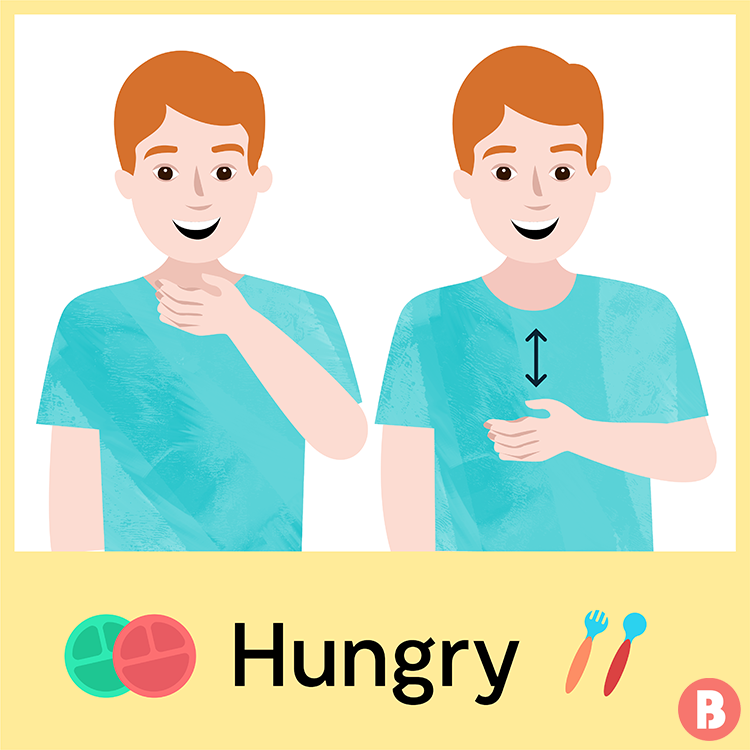
Image: Kitkat Pecson
"Hungry" in sign linguistic communication
It's important for baby to be able to communicate when they're stomach feels empty—you know, before they become hangry. Teach them how to prove you they're "hungry" in sign linguistic communication. Yous tin can make the sign for "hungry" by cupping your hand around your neck to make a C shape, then motion your paw downwards from your neck to your stomach.
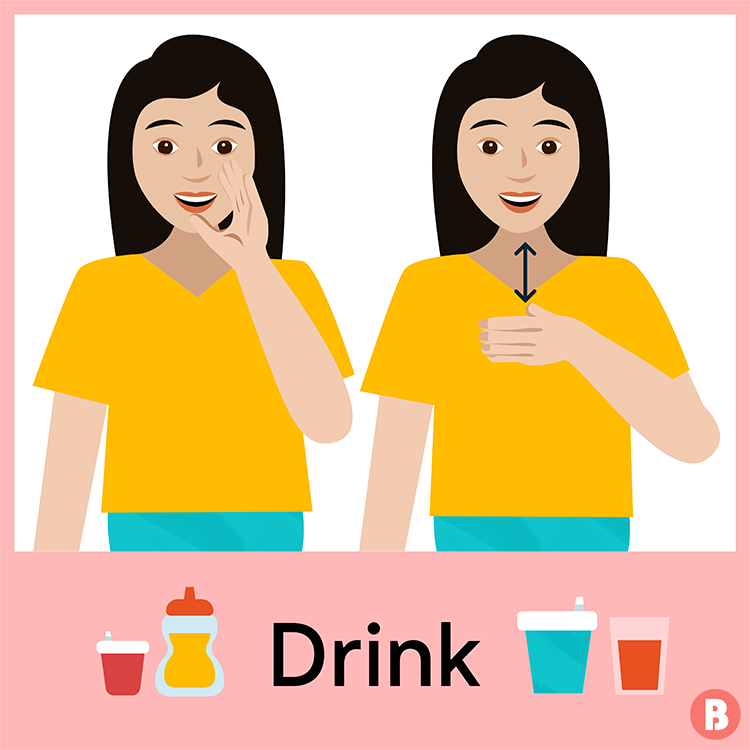
Prototype: Kitkat Pecson
"Drink" in sign language
Want to learn how to sign "drink" in sign linguistic communication? This one involves mimicking the action! Make a C shape with your hand, equally if you were property a loving cup, then move it to your mouth as if you were drinking from it.
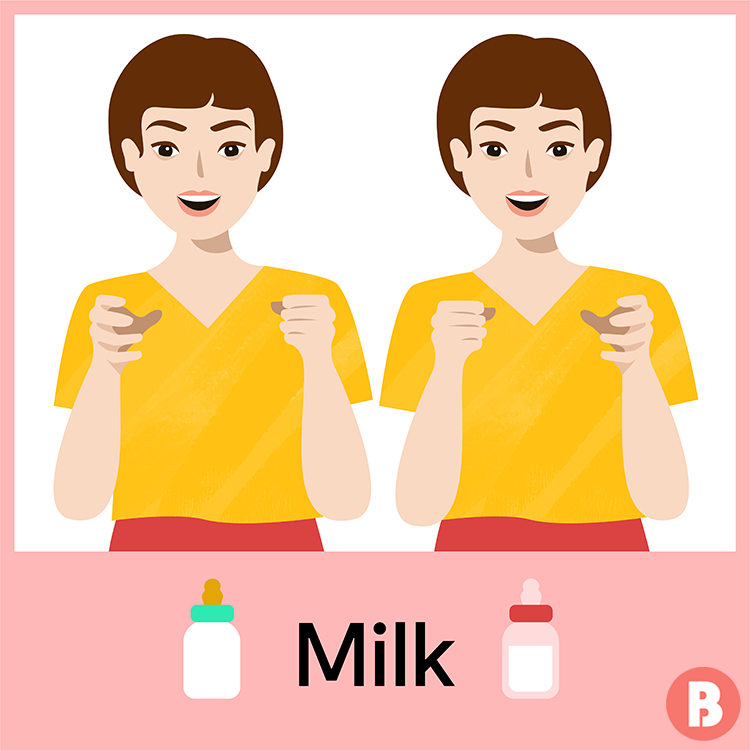
Paradigm: Kitkat Pecson
"Milk" in sign linguistic communication
Wondering how to teach infant sign linguistic communication? It's all-time to get-go with something baby knows, likes and wants—for example, milk. You tin communicate the word "milk" in sign language, by making two fists, then extend your fingers and bring them back into fists.

Image: Kitkat Pecson
"Water" in sign language
Teach infant how to request "h2o" in sign language, and y'all'll e'er know when your little one wants their sippy loving cup. The sign for "water" is made by extending your three middle fingers then they're pointing up, with your thumb and pinkie tucked downwardly, and so borer your alphabetize finger to your chin.
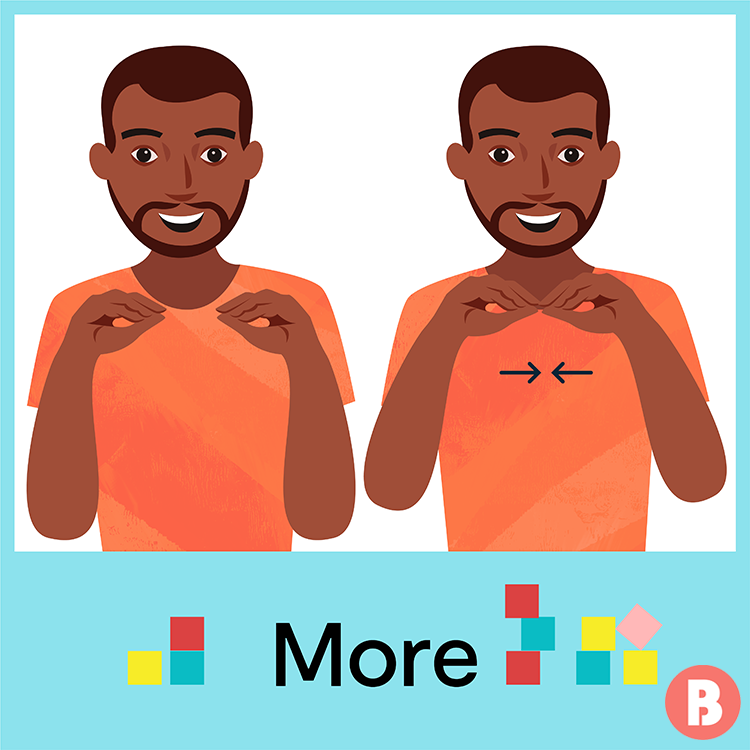
Image: Kitkat Pecson
"More" in sign language
Do y'all have problem knowing if and when babe wants extra spoonfuls of their favorite puree? "More" is another important discussion for you and baby to learn. To express "more" in sign linguistic communication, compression your thumbs and fingers together on both hands, creating two O shapes, then tapping your fingertips together a few times.

Paradigm: Kitkat Pecson
"Done" in sign language
When infant is full, they want you to cease shoving that spoon toward their mouth. Teach them to let y'all know they're "all done" without fussing past using the ASL sign for "finished." Start with your hands upwardly, palms facing toward you, and plough them until your palms confront out.
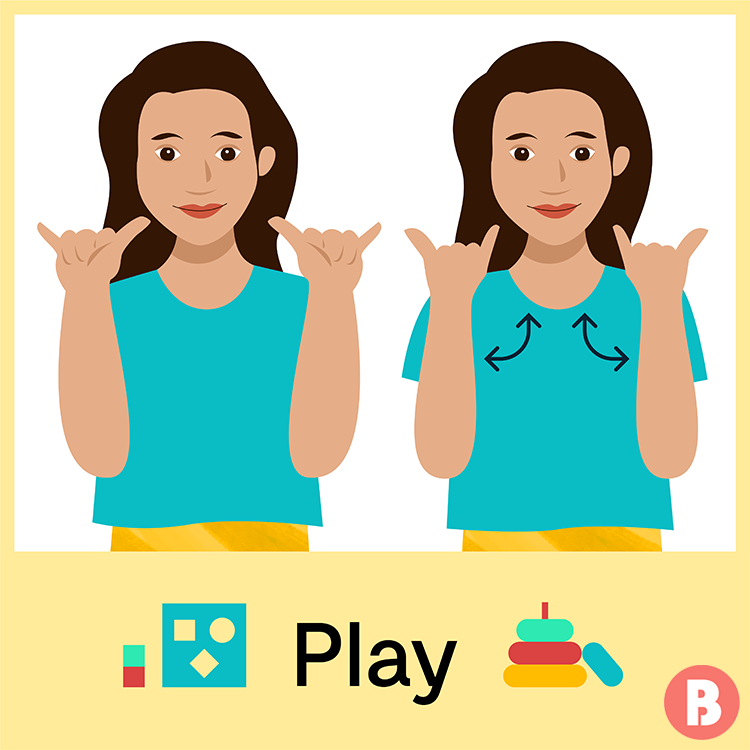
Image: Kitkat Pecson
"Play" in sign linguistic communication
When it comes to babe sign language, the sign "play" certainly belongs in your arsenal. To communicate "play" in sign language, clamp your fingers to your palms, leaving your thumbs and pinkies extended; and so with palms facing you, twist your wrists back and forth.
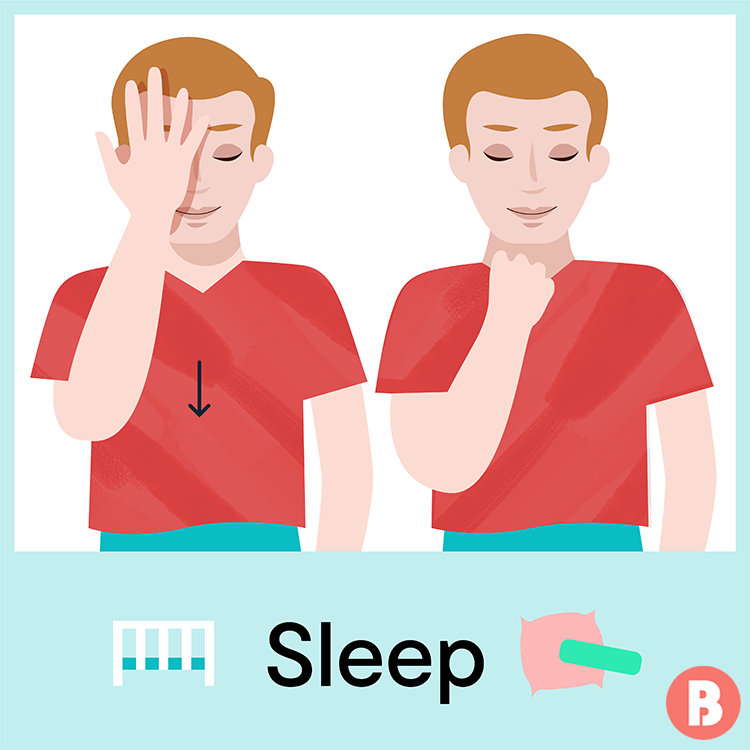
Image: Kitkat Pecson
"Sleep" in sign language
Nobody likes having a fussy, slumber-deprived baby on their hands, so it's a good idea to practice "sleep" in sign linguistic communication. Hold your hand over your forehead with your fingers spread apart, then draw your hand downwards over your face until your fingers and pollex come together to touch on your chin. Even babies who resist naptime may whip this one out when they're especially exhausted.
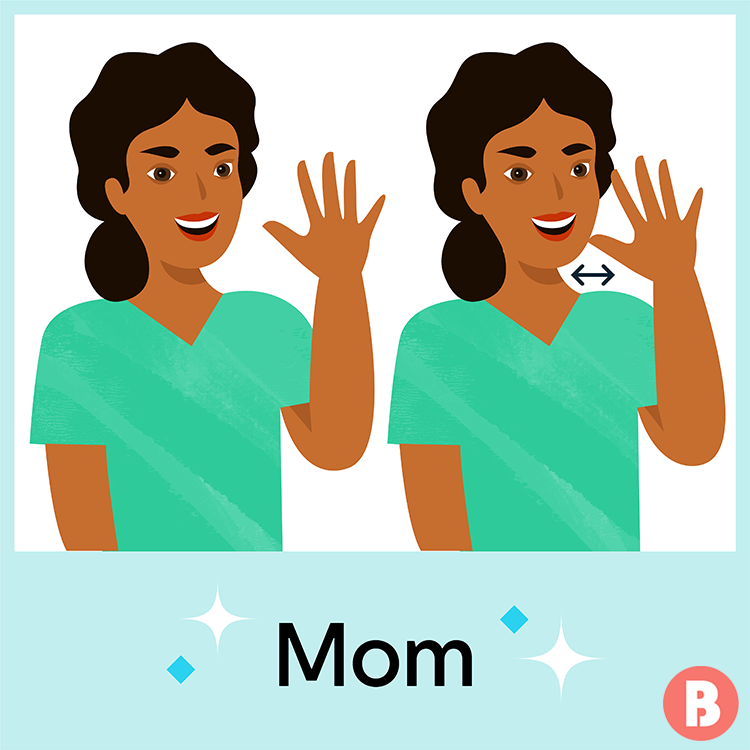
Image: Kitkat Pecson
"Mom" in sign language
Your niggling one volition want to know how to address their favorite person in baby sign language. To sign "mom," only spread your fingers autonomously, then with your little finger facing forrad, tap your thumb to your chin.

Epitome: Kitkat Pecson
"Dad" in sign language
Dad will desire in on the fun too! You lot can brand the sign for "dad" by spreading your fingers autonomously, then with your pinkie facing forward, tap your thumb to your forehead.
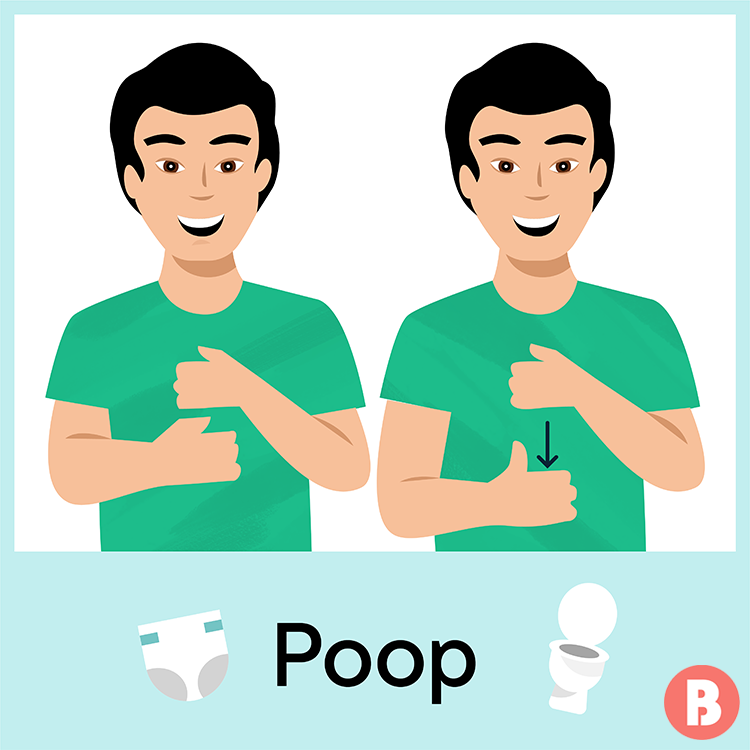
Image: Kitkat Pecson
"Poop" in sign language
Everybody does it, so you might too learn to sign it! If you lot want to indicate "poop" in sign linguistic communication, clench both easily into fists and stack them on superlative of each other, with the thumb of the bottom hand tucked inside the upper fist. Then, pull your bottom paw down from the upper hand, leaving your pollex extended. Adjacent fourth dimension baby soils their diaper, they'll permit you lot know—before you even smell it.
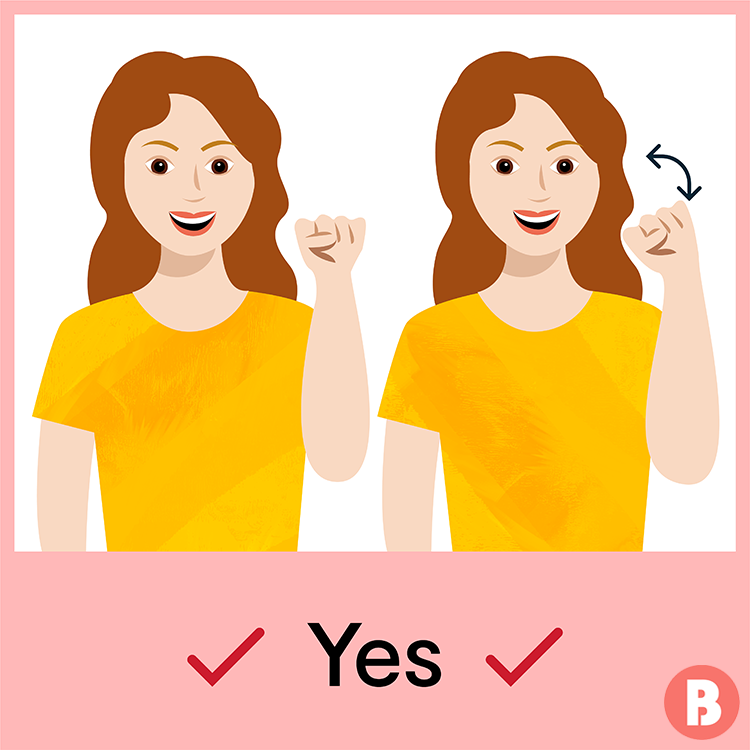
Image: Kitkat Pecson
"Yeah" in sign language
Another like shooting fish in a barrel and important sign to learn is "yes." Enthusiastically nodding your caput is great, but this sign gives baby yet another another communcation tool. Intuitively, "aye" in sign language looks just like a nodding hand. Make a fist and and then, folding at your wrist, bob your fist upwards and down.
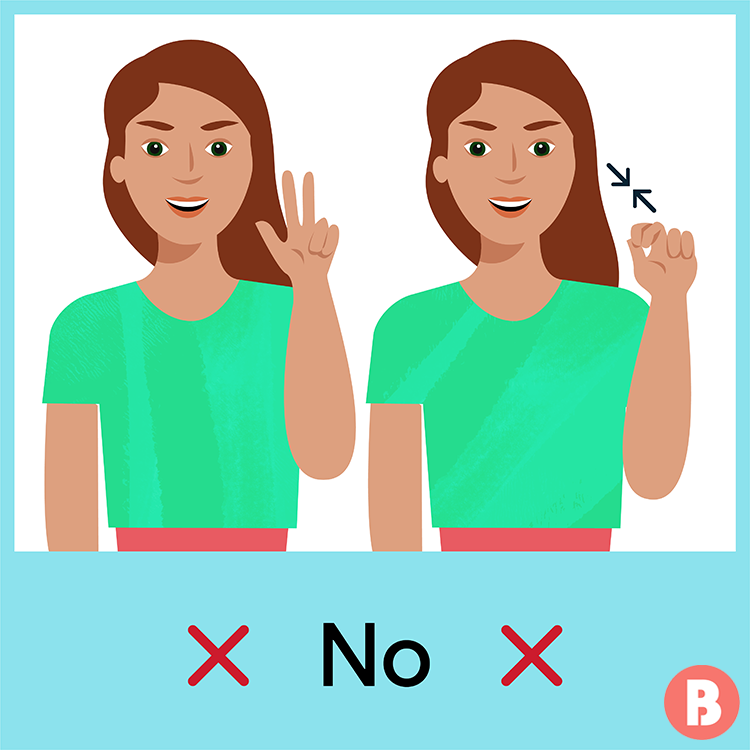
Image: Kitkat Pecson
"No" in sign language
Again, shaking your caput works, but this sign helps reiterate the point. To express "no" in sign language, extend your thumb, index and centre fingers, and then quickly snap them together.
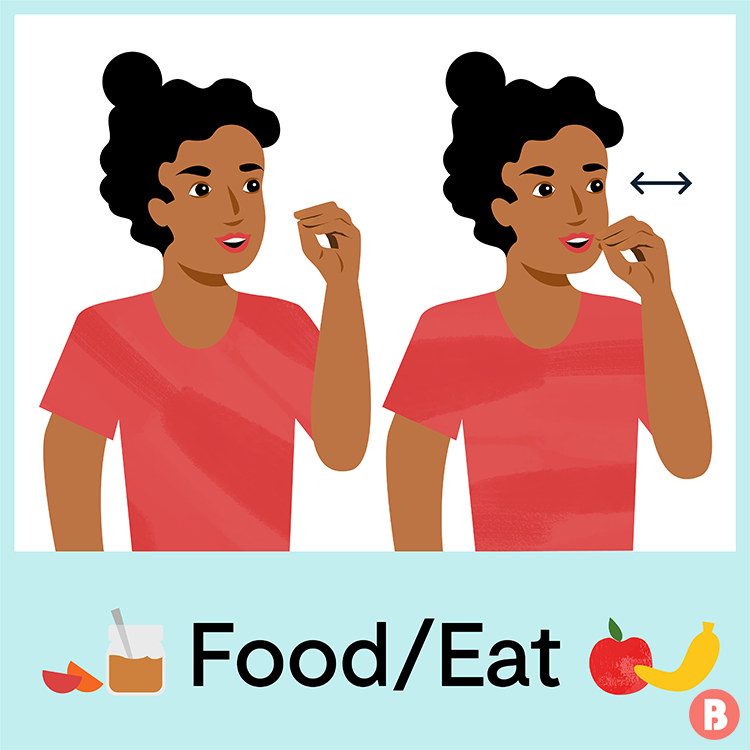
Image: Kitkat Pecson
"Nutrient" in sign language
Instead of signing "hungry," baby may want to ask for "food." This sign tin can as well hateful "eat." Communicate "food" in sign language by flattening your fingers on top of your thumb and and then bringing your fingertips to your mouth.
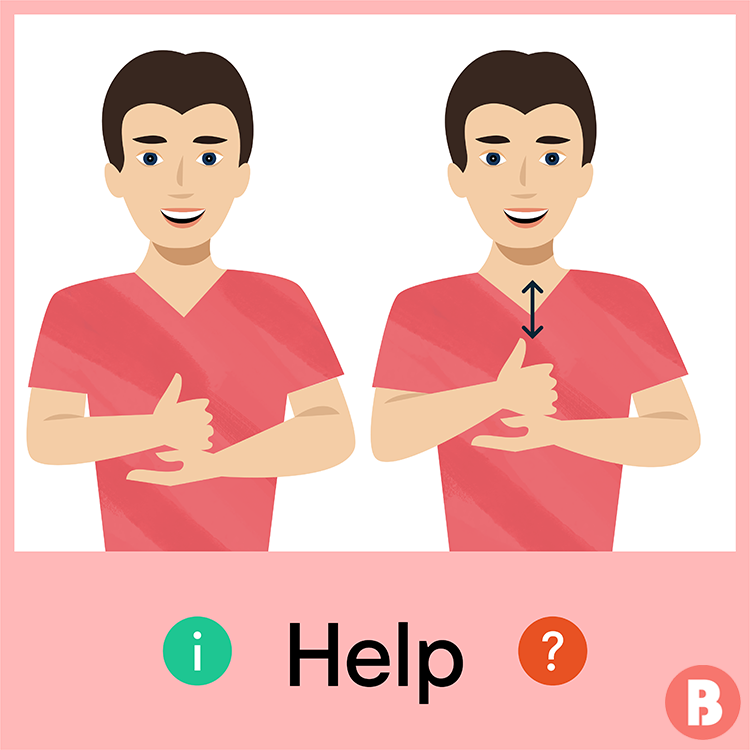
Epitome: Kitkat Pecson
"Help" in sign language
When learning and pedagogy baby sign language, be sure to review the sign for "help." This can be useful to baby in then many different situations; plus, existence able to ask for support from a parent or caregiver can help reduce any frustration a baby may feel. If y'all want to communicate "assistance" in sign language, just brand a fist with one hand, with the pollex extended, and place it over your other manus, which is extended flat. And then move both hands up together.
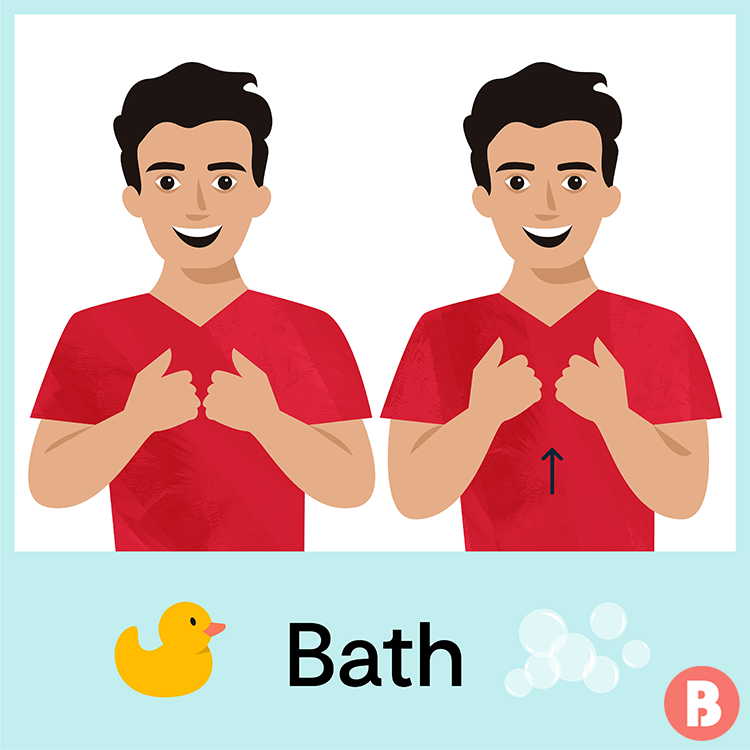
Prototype: Kitkat Pecson
"Bathroom" in sign language
Want to tell baby it's bathtime? Express '"bath" in sign language by making two fists, then moving them up and downward in front of your chest (as if you were scrubbing yourself make clean).
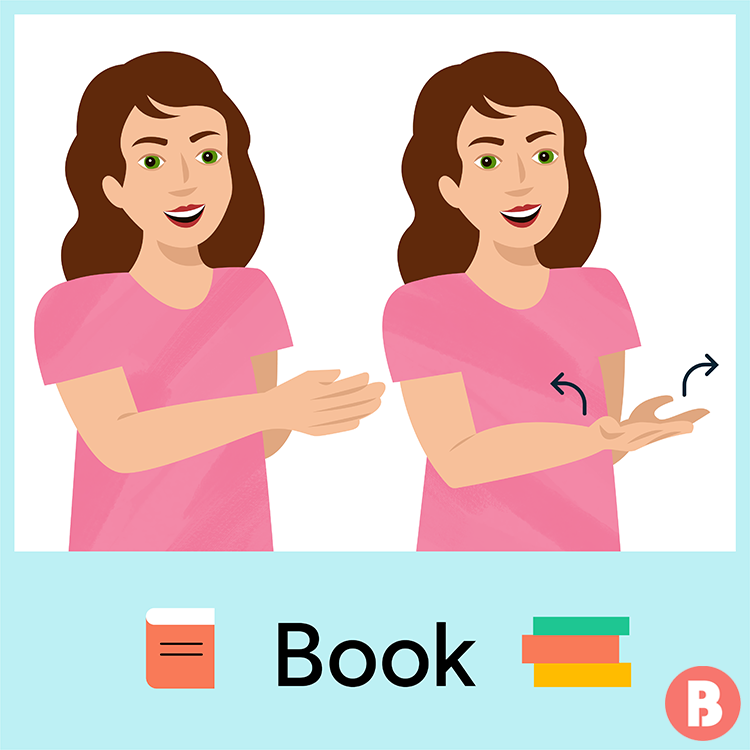
Paradigm: Kitkat Pecson
"Book" in sign language
Storytime is the best time! Use your hands to say "book" in sign linguistic communication; clasp your palms together with your thumbs facing up, and so hinge open your hands, keeping your pinkies together (as if y'all were not bad open a book).

Epitome: Kitkat Pecson
"Medicine" in sign linguistic communication
The sign for "medicine" is made by placing your middle finger into the palm of your contrary hand and twisting.
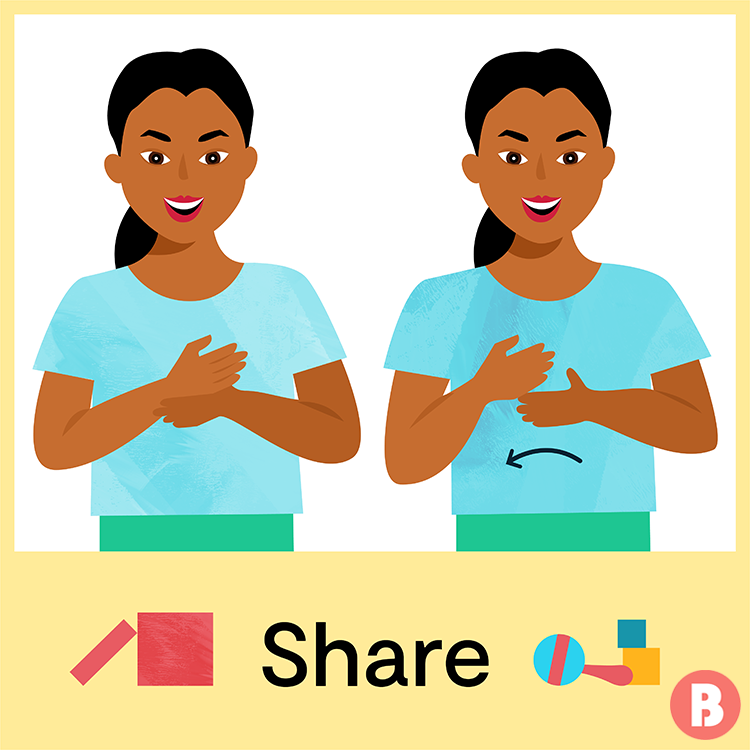
Image: Kitkat Pecson
"Share" in sign language
To sign "share," extend 1 hand flat, with your thumb pointing upwards. Then, run your other mitt back and along along the top of your extended fingers.
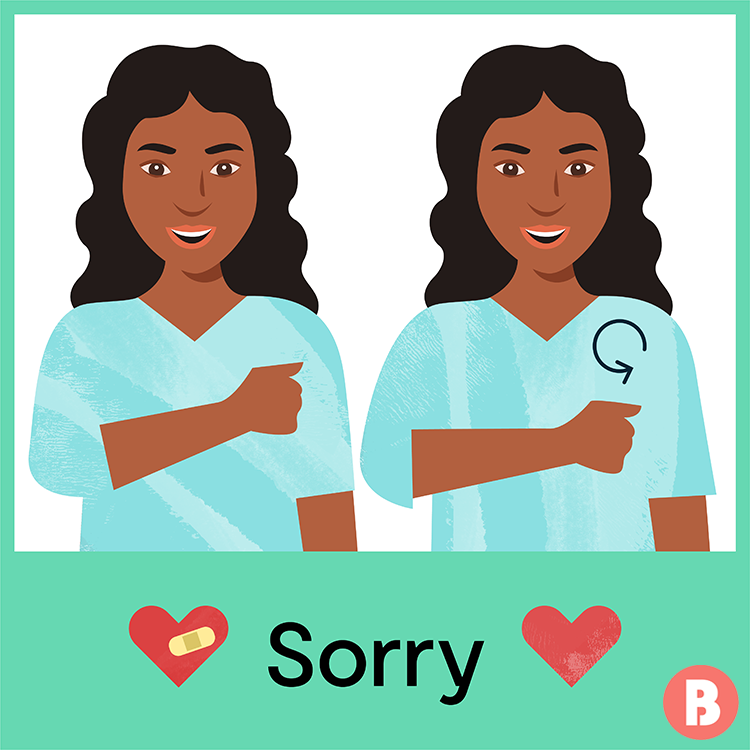
Image: Kitkat Pecson
"Lamentable" in sign language
Teach baby to testify empathy and express feelings before they know how to do it verbally. The sign for "distressing" is fabricated past rubbing a fisted hand in a circle over your chest.
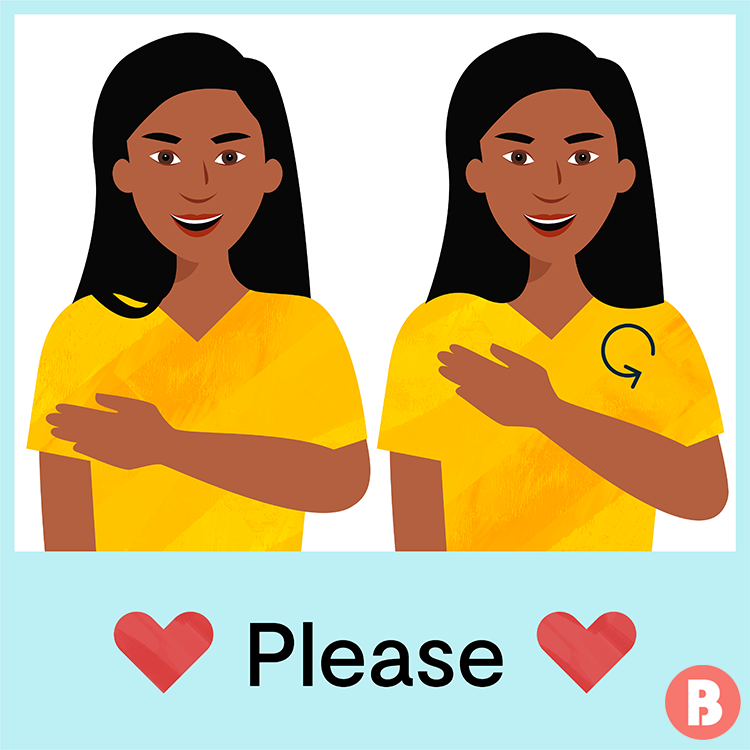
Image: Kitkat Pecson
"Please" in sign language
Manners matter. Teach infant to ask for things politely from the become-go. To sign "delight," extend your fingers and pollex out, then rub your flattened palm confronting your chest in circles.

Image: Kitkat Pecson
"Thank you" in sign language
Nothing is sweeter than watching your niggling ane express gratitude. And they'll appreciate information technology when you testify them the same respect and courtesy correct dorsum. To sign "thank you," straighten your thumb and fingers, then bring your fingers to your chin and pull them away.
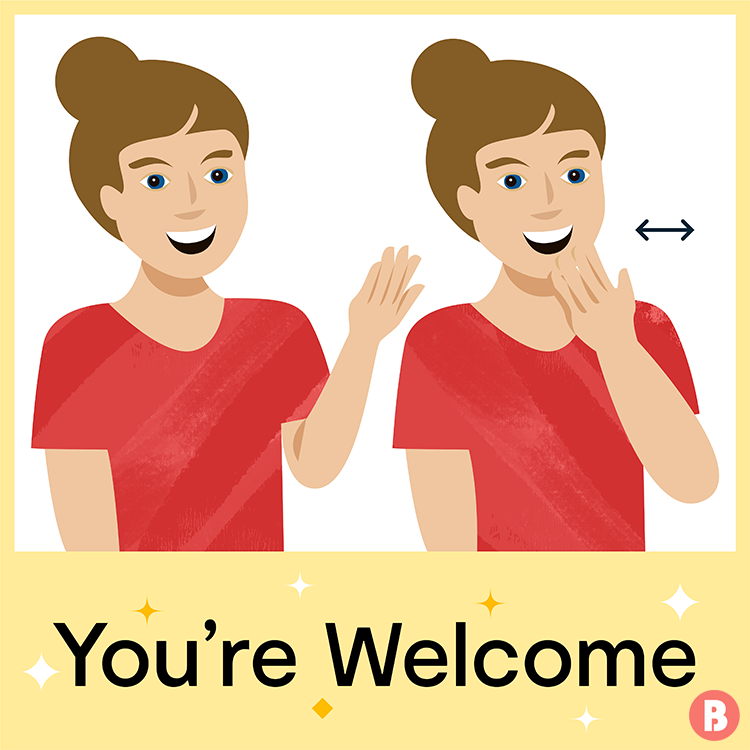
Image: Kitkat Pecson
"You're welcome" in sign language
The sign for "you're welcome" is the aforementioned every bit the sign for "thank you"—flatten your hand, bring your fingers to your mentum and pull them back.
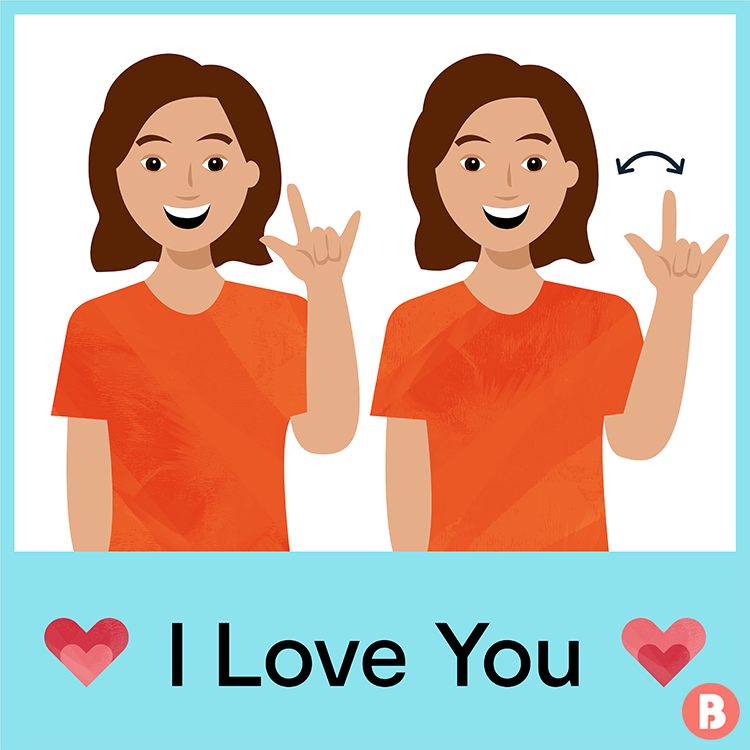
Image: Kitkat Pecson
"I love you" in sign language
This is one sign you're going to both want to use all the fourth dimension. To sign "I love you," extend your thumb, alphabetize and little finger fingers (but keep your ring and centre fingers downward). Concur your manus out with the palm facing abroad and rotate your manus side to side.
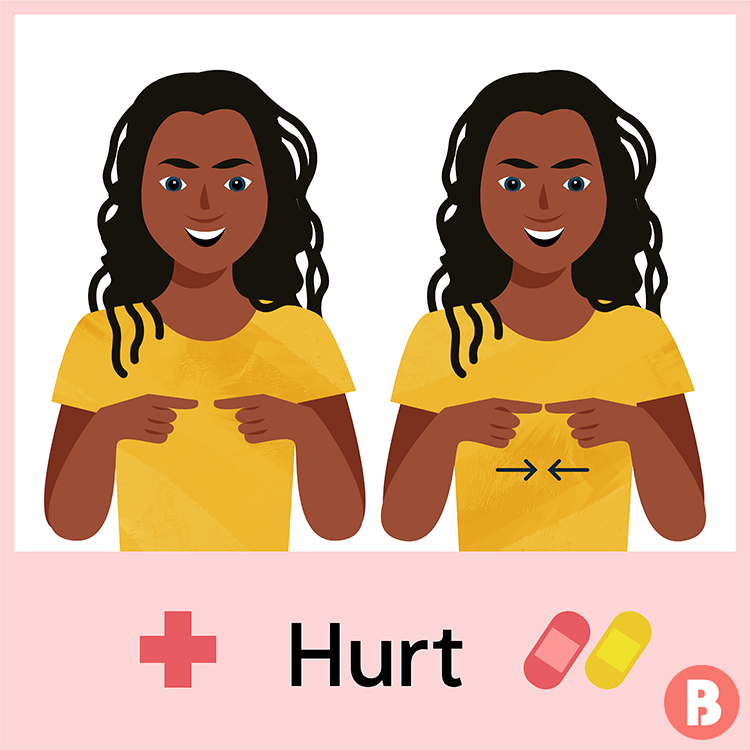
Epitome: Kitkat Pecson
"Hurt" in sign language
The infant sign for "hurt" is done past clenching both hands into fists, so extending your alphabetize fingers and touching them together.
Infant Sign Language Chart
Hither, you tin come across 25 of the most common signs, all in ane comprehensive baby sign language chart.
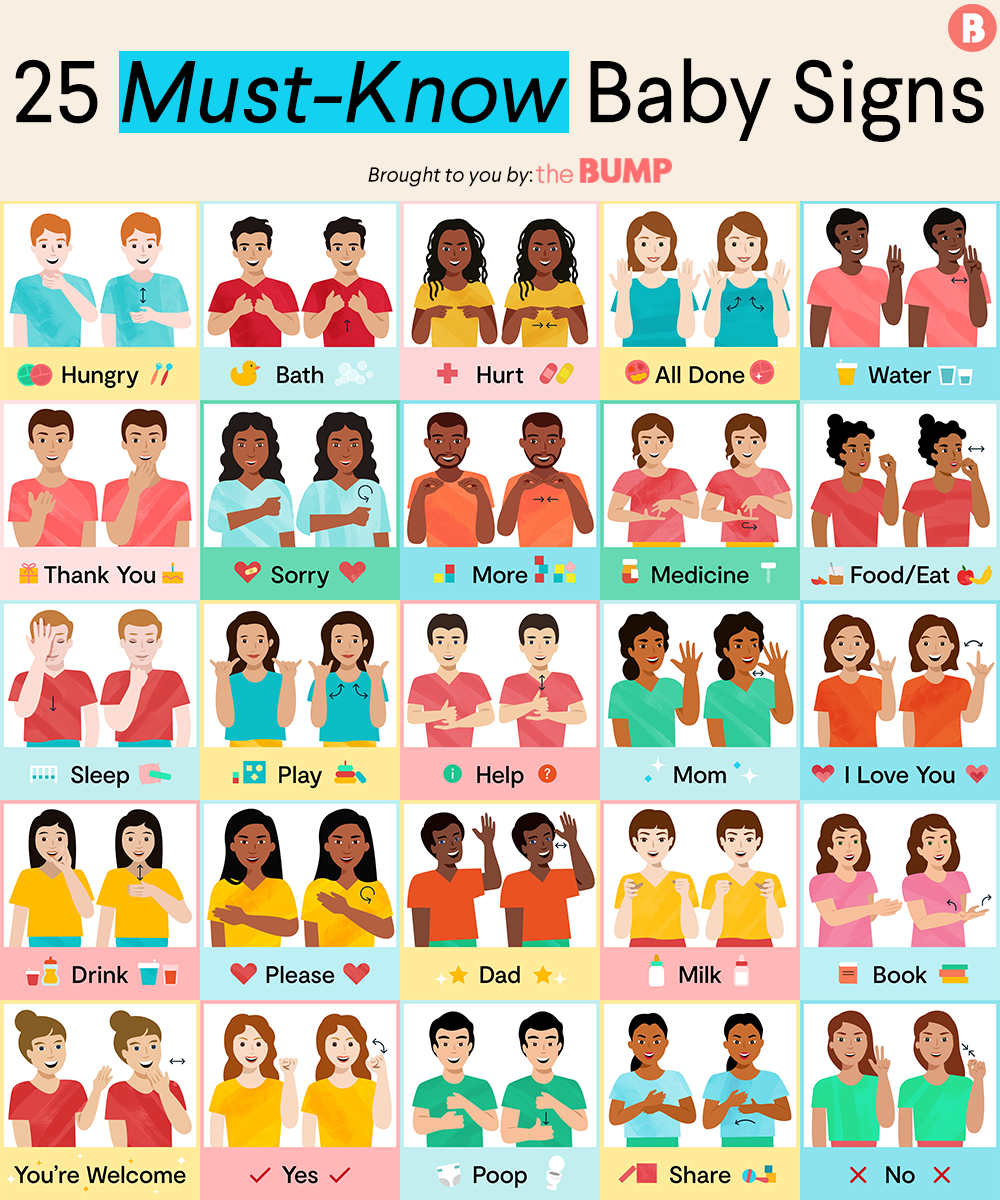
Image: Kitkat Pecson
Now that yous know the basics of how to teach baby sign linguistic communication, brainstorm practicing a few words you lot remember you lot'll utilise most oftentimes at home. Your little one will love having a special manner to communicate their wants and needs with you. What'due south more than, having the ability to limited your feelings to each other volition assist strengthen your bond. It'southward a win-win!
About the experts:
Jann Fujimoto, CCC-SLP, is a certified spoken communication-language pathologist in Wisconsin. With 17 years of experience, she has worked in nativity-to-three programs, pre-schools and schools, hospitals, skilled nursing facilities and outpatient clinics. She received her MS in communication disorders from the Academy of Texas at Dallas.
Please note: The Bump and the materials and data information technology contains are not intended to, and do not constitute, medical or other health advice or diagnosis and should not be used every bit such. You should e'er consult with a qualified md or health professional nearly your specific circumstances.
Plus, more from The Crash-land:
Source: https://www.thebump.com/a/how-to-teach-baby-sign-language
Post a Comment for "When and How to Teach Baby Sign Language"